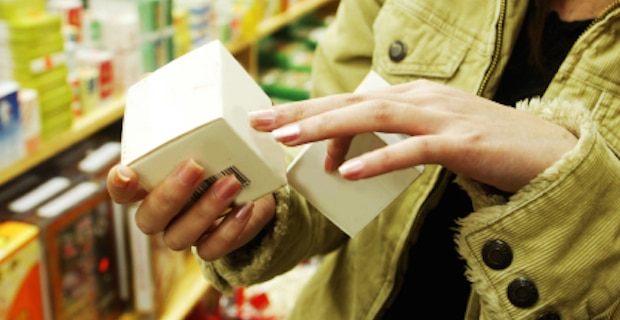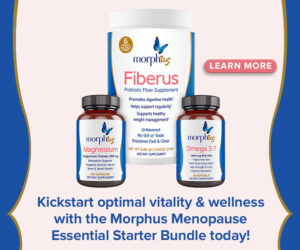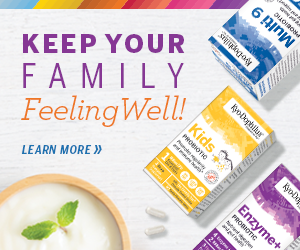
If you enjoy grocery shopping like I do, you probably spend time browsing the aisles looking for great new products. I’m always interested in something that will help me pick up more dirt, that will make my meals taste better, and that will get my whites whiter than white. Discovering these products isn’t difficult; you just have to look for the special “NEW” or “IMPROVED” flashes on the labels. In fact, as any consumer goods marketer will tell you, a product’s label is one of the most powerful selling tools they have. It’s also one of the most efficient – it doesn’t cost extra to have a label on your product. In fact, you have to, so you may as well make it work for you.
When it comes to skin care and cosmetics, manufacturers have become quite good at making their labels work for them. As Charles Revson, the founder of Revlon, famously said, “in the factory we manufacture cosmetics; in the store we sell hope.” No small order, selling hope. Let’s start with the label: “Softer, smoother looking skin.” “Younger looking skin from the first use.” “Eliminates the look of lines and wrinkles.” “For a more beautiful you.” “You’re worth it.” Hope, it seems, springs eternal!
While producing cosmetics labels that “sell” may seem like an art, it is actually a combination of art and government-regulated science. In virtually every developed country, there is a government agency responsible for regulating the content of cosmetics labels. And there is likely more there than initially meets the eye, so here is a quick guide to navigating the complex waters of cosmetics product labeling.
Read more about endocrine disruptors in personal care products
Product Identity
In addition to the brand name and descriptive name of the product, manufacturers must list the legal name of their company, their head office address, and the country in which the product was produced. You should always be able to directly contact the manufacturer of any cosmetic product you buy.
Product Description, Features, Benefits, Usage Instructions
While there is some regulation around this content, there is lots of wiggle room for manufacturers. In theory, product performance claims must be true and accurate. In practice, they are often vague enough to be misleading. Read this information carefully to understand what the manufacturer is really saying. “Eliminates the look of fine lines and wrinkles” does not mean it eliminates lines and wrinkles; just the look of lines and wrinkles. Typically when you stop using the product, they come back.
You should always read any warnings and special instructions to determine if the product is contraindicated for certain skin types, ages or conditions. Regardless of what the label says, every time you use a new product on yourself or a family member, test a small amount on the inside skin of your wrist or elbow. Any sensitivity caused by the product should be noticeable after just a few minutes.
Product Ingredients
All personal care products must list ingredients in standard, INCI (International Nomenclature of Cosmetics Ingredients) format. By this standard, ingredients are listed in descending order of concentration using the scientific name. Remember that some ingredients, such as “fragrance”, are catch-all terms for groups of ingredients. Unfortunately manufacturers aren’t obligated to disclose the composition of these ingredients, so some ingredients may be hidden.Learn which ingredients in turn are made up of these hidden ingredients so you can avoid some of the more toxic ones like phthalates, commonly found in “fragrance.”
Weights and Measures
In addition to the size of the product, typically measured in volume, you will also find other important product information symbols on labels. The most common ones are:
Jar Icon: Consider this a “best before” symbol. The number inside the open jar icon is the length of time in months the product will stay fresh after it has been opened. Typically, the longer the product will stay fresh, the more synthetic it is. More natural products typically have a shelf life of approximately 12 months.
Triangular Recycling Symbol: This is a standard recycling symbol found on virtually all plastic cosmetics containers, and is important for two reasons. First, it tells you what type of recycling program is required for this particular container, and second, it tells you what kind of plastic the container is made from (PVC, LDPE, HDPE, etc). Some types of plastic should be avoided because they are thought to leach chemicals into the products inside.
Read more about plastics and recycling numbers
Certified Organic Logo: Increasingly common are symbols representing organic, natural product, or soil management certification programs. Each of these programs has different criteria for certifying products, so familiarize yourself as best you can with their guidelines so you know what you are buying.
e: The large ‘e’ symbol found following the size means the product was filled using European Union system of measures. This typically means the product is sold overseas.
With just a little bit of label sleuthing, you can save yourself from building up mountains of half-used products at home. Knowing what to look for (and what to avoid!) can help separate the ones that really deliver from the pretenders. Because while hope itself costs nothing, that wrinkle cream doesn’t.
Image: Cascadian Farm




